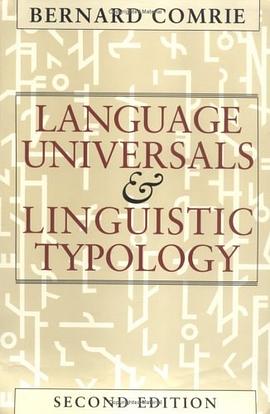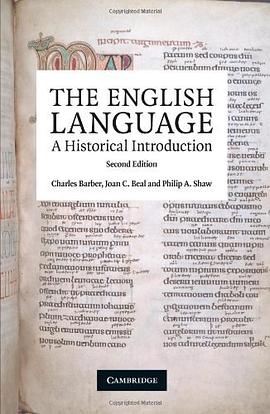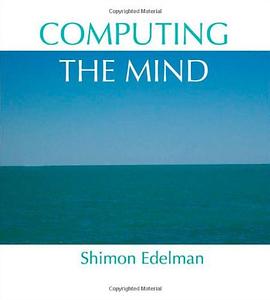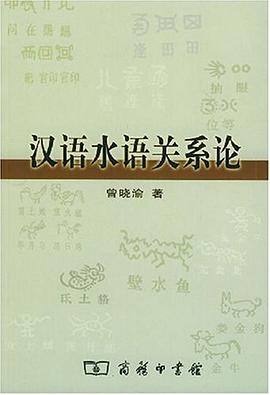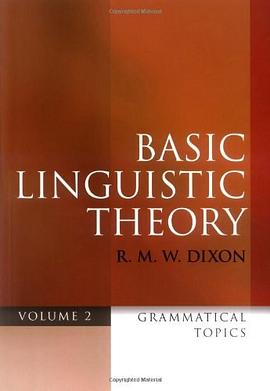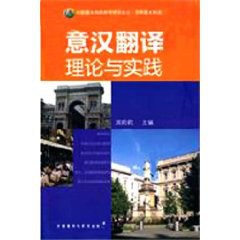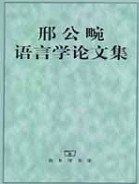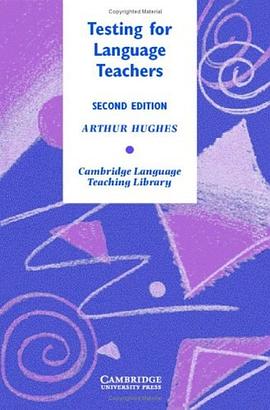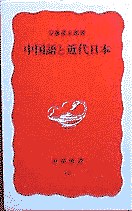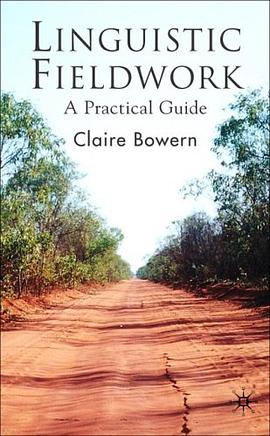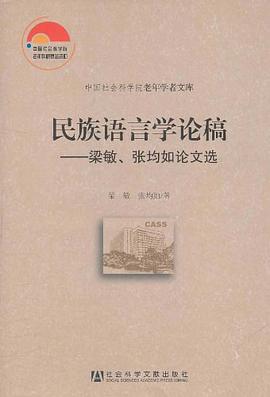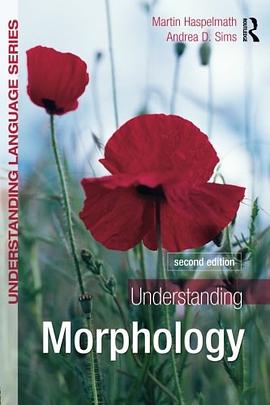
Understanding Morphology pdf epub mobi txt 電子書 下載2025
- 語言學
- Morphology
- 形態學
- 語言學/習
- 語法
- 語言學
- 英語
- p
- morphology
- grammar
- syntax
- language
- structure
- semantics
- phonology
- textual analysis
- lexical analysis

具體描述
This new edition of Understanding Morphology has been fully revised in line with the latest research. It now includes 'big picture' questions to highlight central themes in morphology, as well as research exercises for each chapter. Understanding Morphology presents an introduction to the study of word structure that starts at the very beginning. Assuming no knowledge of the field of morphology on the part of the reader, the book presents a broad range of morphological phenomena from a wide variety of languages. Starting with the core areas of inflection and derivation, the book presents the interfaces between morphology and syntax and between morphology and phonology. The synchronic study of word structure is covered, as are the phenomena of diachronic change, such as analogy and grammaticalization. Theories are presented clearly in accessible language with the main purpose of shedding light on the data, rather than as a goal in themselves. The authors consistently draw on the best research available, thus utilizing and discussing both functionalist and generative theoretical approaches. Each chapter includes a summary, suggestions for further reading, and exercises. As such this is the ideal book for both beginning students of linguistics, or anyone in a related discipline looking for a first introduction to morphology.
著者簡介
Martin Haspelmath(Max Planck Institute for Evolutionary Anthropology)
Andrea D. Sims(The Ohio State University)
圖書目錄
Preface to the first edition xiii
Abbreviations xv
1 Introduction 1
1.1 What is morphology? 1
1.2 Morphology in different languages 4
1.3 The goals of morphological research 6
1.4 A brief user’s guide to this book 9
Summary of Chapter 1 11
Further reading 11
Comprehension exercises 12
2 Basic concepts 14
2.1 Lexemes and word-forms 15
2.2 Affixes, bases and roots 19
2.3 Morphemes and allomorphs 22
Summary of Chapter 2 27
Appendix. Morpheme-by-morpheme glosses 27
Comprehension exercises 29
Exploratory exercise 30
3 Rules 33
3.1 Morphological patterns 34
3.1.1 Affixation and compounding 34
3.1.2 Base modification 35
3.1.3 Reduplication 38
3.1.4 Conversion 39
3.1.5 Outside the realm of morphology 40
viâ•… C O N T E N T S
3.2 Two approaches to morphological rules 40
3.2.1 The morpheme-based model 41
3.2.2 The word-based model 46
Summary of Chapter 3 54
Further reading 54
Comprehension exercises 55
Exploratory exercise 56
4 Lexicon 60
4.1 A morpheme lexicon? 61
4.2 A strict word-form lexicon? 66
4.3 Reconciling word-forms and morphemes 70
Summary of Chapter 4 75
Further reading 75
Comprehension exercises 76
Exploratory exercise 77
5 Inflection and derivation 81
5.1 Inflectional values 81
5.2 Derivational meanings 86
5.2.1 Derived nouns 87
5.2.2 Derived verbs 88
5.2.3 Derived adjectives 89
5.3 Properties of inflection and derivation 89
5.3.1 Relevance to the syntax 90
5.3.2 Obligatoriness 92
5.3.3 Limitations on application 93
5.3.4 Same concept as base 93
5.3.5 Abstractness 94
5.3.6 Meaning compositionality 94
5.3.7 Position relative to base 95
5.3.8 Base allomorphy 96
5.3.9 Word-class change 96
5.3.10 Cumulative expression 98
5.3.11 Iteration 98
5.4 Dichotomy or continuum? 98
5.4.1 Inherent and contextual inflection 100
5.5 Inflection, derivation and the syntax-morphology interface 102
5.5.1 The dichotomy approach and split morphology 102
5.5.2 The continuum approach and single-component
architecture 105
Summary of Chapter 5 106
Appendix. Notation conventions for inflectional values 107
C O N T E N T S â•… vii
Further reading 109
Comprehension exercises 110
Exploratory exercise 110
6 Productivity 114
6.1 Speakers’ knowledge of productivity 114
6.2 Productivity, creativity and gradience 116
6.3 Restrictions on word-formation rules 117
6.3.1 Phonological restrictions 118
6.3.2 Semantic restrictions 119
6.3.3 Pragmatic restrictions 120
6.3.4 Morphological restrictions 120
6.3.5 Borrowed vocabulary strata 121
6.4 Productivity and the lexicon 122
6.4.1 Processing restrictions 123
6.4.2 Synonymy blocking 125
6.4.3 Productivity and analogy 127
6.5 Measuring productivity 129
Summary of Chapter 6 131
Further reading 132
Comprehension exercises 133
Exploratory exercise 134
7 Morphological trees 137
7.1 Compounding types 137
7.2 Hierarchical structure in compounds 142
7.3 Hierarchical structure in derived lexemes 144
7.4 Parallels between syntax and morphology? 147
Summary of Chapter 7 150
Further reading 150
Comprehension exercises 151
Exploratory exercise 152
8 Inflectional paradigms 156
8.1 Syntagmatic and paradigmatic relations in morphology 156
8.2 Inflection classes 158
8.2.1 Inflection class assignment 160
8.2.2 Relationship to gender 162
8.2.3 Inflection classes and productivity 163
8.3 Paradigmatic relations and inflection class shift 165
8.4 Inheritance hierarchies 167
8.5 Stems and Priscianic formation 172
viiiâ•… C O N T E N T S
8.6 Syncretism 174
8.6.1 Systematic versus accidental inflectional homonymy 174
8.6.2 Underspecification 176
8.6.3 Rules of referral 179
8.7 More form-meaning mismatches 180
8.7.1 Defectiveness 180
8.7.2 Deponency 182
8.8 Periphrasis 183
Summary of Chapter 8 184
Further reading 184
Comprehension exercises 185
Exploratory exercise 187
9 Words and phrases 189
9.1 Compounds versus phrases 190
9.2 Free forms versus bound forms 196
9.3 Clitics versus affixes 197
9.4 Lexical integrity 203
Summary of Chapter 9 206
Further reading 207
Comprehension exercises 207
Exploratory exercise 209
10 Morphophonology 211
10.1 Two types of alternations 211
10.2 The productivity of morphophonological alternations 217
10.3 The diachrony of morphophonological alternations 220
10.4 Morphophonology as phonology 222
10.5 Morphophonology as morphology 228
Summary of Chapter 10 231
Further reading 231
Comprehension exercises 232
11 Morphology and valence 234
11.1 Valence-changing operations 234
11.1.1 Semantic valence and syntactic valence (argument
structure and function structure) 234
11.1.2 Agent-backgrounding operations 237
11.1.3 Patient-backgrounding operations 240
11.1.4 Agent-adding operations: causatives 241
11.1.5 Object-creating operations: applicatives 242
11.1.6 General properties of valence-changing operations 243
C O N T E N T S â•… ix
11.2 Valence in compounding 245
11.2.1 Noun incorporation 245
11.2.2 V–V compound verbs 247
11.2.3 Synthetic nominal compounds 249
11.3 Transpositional derivation 253
11.3.1 Transposition and argument inheritance 253
11.3.2 Action nouns (V Æ N) 254
11.3.3 Agent nouns (V Æ N) and deverbal adjectives (V Æ A) 255
11.3.4 Deadjectival transposition (A Æ N, A Æ V) 256
11.4 Transpositional inflection 257
Summary of Chapter 11 262
Further reading 263
Comprehension exercises 263
12 Frequency effects in morphology 265
12.1 Asymmetries in inflectional values 265
12.1.1 Frequent and rare values 265
12.1.2 The correlation between frequency and shortness 267
12.1.3 The correlation between frequency and differentiation 268
12.1.4 Local frequency reversals 270
12.1.5 Explaining the correlations 272
12.2 The direction of analogical levelling 273
12.3 Frequency and irregularity 274
Summary of Chapter 12 276
Further reading 277
Comprehension exercises 277
Exploratory exercise 278
Key to comprehension exercises 281
References 301
Glossary of technical terms 318
Language index 347
Subject index 357
· · · · · · (收起)
讀後感
总体来看,方法论上以functionalism为主,但并不排斥formalism的做法。虽然从formal那边借来不少理论当靶子…… Summary of Chapter 1 概论 形态学可以定义为是一门研究语素组合构成词汇的学问。但另一个多少更加抽象些的定义(研究词汇形式和意义系统共变)被证明会更令人满...
評分总体来看,方法论上以functionalism为主,但并不排斥formalism的做法。虽然从formal那边借来不少理论当靶子…… Summary of Chapter 1 概论 形态学可以定义为是一门研究语素组合构成词汇的学问。但另一个多少更加抽象些的定义(研究词汇形式和意义系统共变)被证明会更令人满...
評分总体来看,方法论上以functionalism为主,但并不排斥formalism的做法。虽然从formal那边借来不少理论当靶子…… Summary of Chapter 1 概论 形态学可以定义为是一门研究语素组合构成词汇的学问。但另一个多少更加抽象些的定义(研究词汇形式和意义系统共变)被证明会更令人满...
評分总体来看,方法论上以functionalism为主,但并不排斥formalism的做法。虽然从formal那边借来不少理论当靶子…… Summary of Chapter 1 概论 形态学可以定义为是一门研究语素组合构成词汇的学问。但另一个多少更加抽象些的定义(研究词汇形式和意义系统共变)被证明会更令人满...
評分总体来看,方法论上以functionalism为主,但并不排斥formalism的做法。虽然从formal那边借来不少理论当靶子…… Summary of Chapter 1 概论 形态学可以定义为是一门研究语素组合构成词汇的学问。但另一个多少更加抽象些的定义(研究词汇形式和意义系统共变)被证明会更令人满...
用戶評價
Linguistics 100 Introduction to Linguistic Science...
评分簡潔清晰,是很好的入門教材。另外,章節後麵的Exploratory Exercise都很有意思。
评分課本。真的好難讀,好難懂= =導緻我對morphology無感的原因之一。。。。。如果本科最後一個學期跟Mark Aronoff 上這門課的話會好很多吧TVT
评分為復試祈福
评分簡潔清晰,是很好的入門教材。另外,章節後麵的Exploratory Exercise都很有意思。
相關圖書
本站所有內容均為互聯網搜索引擎提供的公開搜索信息,本站不存儲任何數據與內容,任何內容與數據均與本站無關,如有需要請聯繫相關搜索引擎包括但不限於百度,google,bing,sogou 等
© 2025 book.quotespace.org All Rights Reserved. 小美書屋 版权所有



